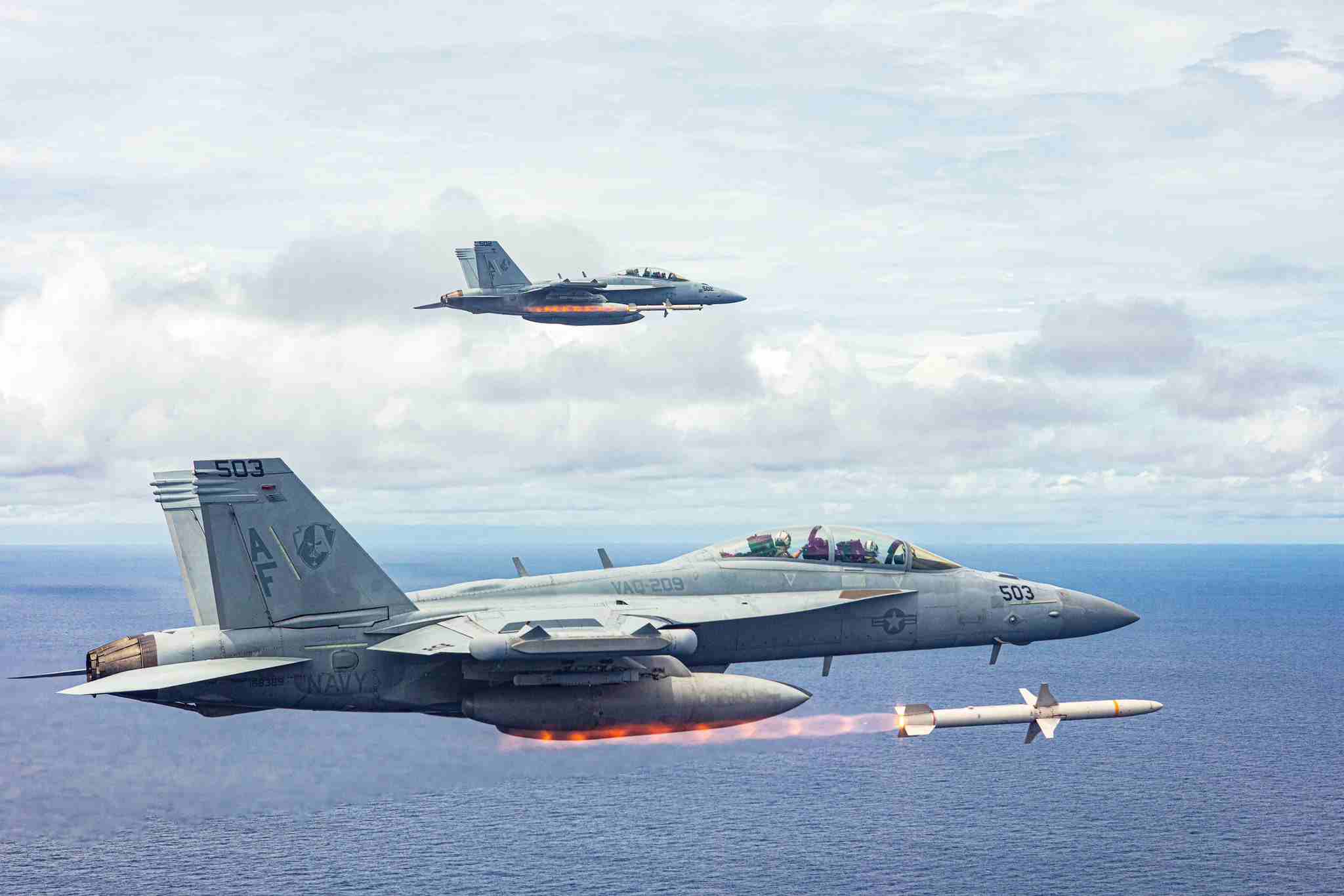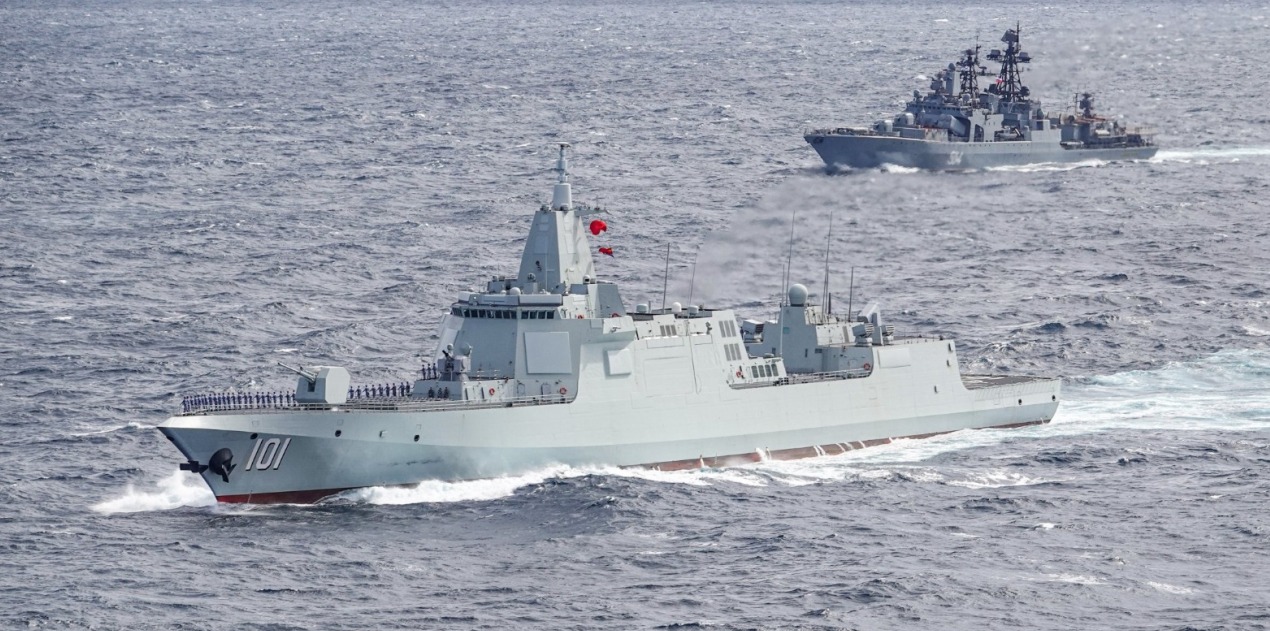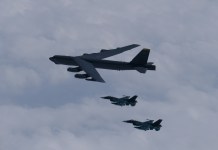In a high-stakes game of cat and mouse in the South China Sea, China’s People’s Liberation Army Navy (PLAN) has revealed new information about the advanced strategies and equipment Chinese warships use to counter US electronic warfare aircraft, particularly the EA-18G Growler.
F-16s “Sitting Ducks” For Russian MiG-31 Fighters? Putin Warns Of Consequences Over Fighting Falcons
The new report, published in the Chinese academic journal Radar & ECM and highlighted by Hong Kong-based South China Morning Post, sheds light on a high-profile incident from December 2023.
William Coulter, the commander of US Electronic Attack Squadron 136 (VAQ-136) aboard the USS Carl Vinson, was unexpectedly relieved of his duties.
While the US Navy attributed this decision to a “loss of confidence in his ability to command,” the report suggests that Coulter’s removal might be linked to the US Navy’s struggles in countering Chinese electronic warfare.
In January 2024, PLA officers and sailors aboard the Type 055 destroyer Nanchang were honored for their actions against a US aircraft carrier fleet. Chinese media subsequently broadcast footage showing interactions between two US jets, including one believed to be an EA-18G Growler and the Nanchang destroyer.
The report claims how the PLA Navy has leveraged cutting-edge artificial intelligence (AI) to develop a powerful “kill web” designed to challenge the capabilities of the US Navy’s EA-18G Growler.
The report states that the PLA Navy scientists have, for the first time, shed light on how their modern warships combat the advanced electronic warfare capabilities of the EA-18G Growler, which is a pivotal component of the US AirSea Battle strategy.
Boeing’s EA-18G Growler is renowned for its electronic jamming capabilities, designed to suppress enemy radar and communication systems. Despite its advanced technology and recent upgrades, which include modernization initiatives for its F/A-18 Hornet and Super Hornet variants, the Growler is not impervious to countermeasures.
Chinese scientists disclosed that the PLA Navy’s Type 055 destroyers, such as the Nanchang, are equipped with sophisticated radars and sensors.
F-16s “Sitting Ducks” For Russian MiG-31 Fighters? Putin Warns Of Consequences Over Fighting Falcons
The integration of these systems reduces the effectiveness of Growler’s electronic jamming by enabling them to process large volumes of data. The PLA Navy has demonstrated a noteworthy advancement in its technological capabilities by integrating these two systems and continuing to operate effectively even in the face of electronic attacks.
The intense competition between the Chinese Navy and US Growler aircraft dates back to at least 2018. During the Trump administration, reports indicated that China had deployed radar and communication jamming equipment in the South China Sea.
At that time, EA-18G Growler pilots suspected interference from Chinese systems, though experts debated the extent of the impact on the aircraft’s operational capabilities.

US EA-18G Growler Confronts China’s ‘Kill Web’
Chinese scientists assert that artificial intelligence (AI) has given the PLA’s radar systems a decisive advantage over the EA-18G Growler.
A scientist highlighted the capabilities of cognitive intelligent radar, which include proactive environmental sensing, customizable transmit and receive functions, intelligent processing, and resource scheduling.
These features allow the radar to effectively counter the complex and variable electromagnetic jamming tactics employed by the EA-18G.
He explained that system detection was more than merely stacking multiple sensors or creating a loosely connected network. Instead, a comprehensive utilization of various sensors’ performance characteristics is involved based on actual conditions.

This approach ensures a rational allocation and scheduling of detection resources from a tactical perspective, thereby enhancing the platform’s information control capabilities.
Chinese scientists have made significant progress in ensuring dependable and fast communication for the whole fleet, even in intricate electromagnetic environments. Chinese naval vessels in the vicinity quickly counterattack an EA-18G that targets one of their ships.
This coordination creates a massive “kill web” capable of flexibly and intelligently countering the EA-18G, transforming from a “single-resource confrontation” to a “systematic detection resource confrontation.”
With these technological advancements, the Chinese navy has shifted from a previously cautious stance to a more proactive strategy. This new approach, described as “attacking as a defense,” involves taking multiple measures simultaneously, optimizing combinations, and collaborating with other elements to counter electronic warfare aircraft effectively.
‘Raptor Salad’ For Lunch! US F-22 Raptor Outgunned, Outmaneuvered By German Eurofighter Typhoon?
An official report on the Nanchang confirmed this tactical shift. The ship broke from traditional formation ranks, advancing 100 nautical miles (185 km) ahead and, with the support of rear forces, blocked a US aircraft carrier task force from entering a Chinese exercise zone.
In response, the US military deployed carrier-based aircraft. Videos released by China indicated that the EA-18G might have used a combat mode known as jamming-while-accompanying, forming a formation with other warplanes and conducting noise jamming or releasing dense, false target signals to confuse the Nanchang.
Despite these efforts, the Nanchang’s radar system continued to function normally and successfully locked onto the US fleet’s main targets. According to a commander on board the Nanchang, the US ships and aircraft withdrew not long after they removed the protective covers from the vertical launching system.
- Contact the author at ashishmichel(at)gmail.com
- Follow EurAsian Times on Google News




